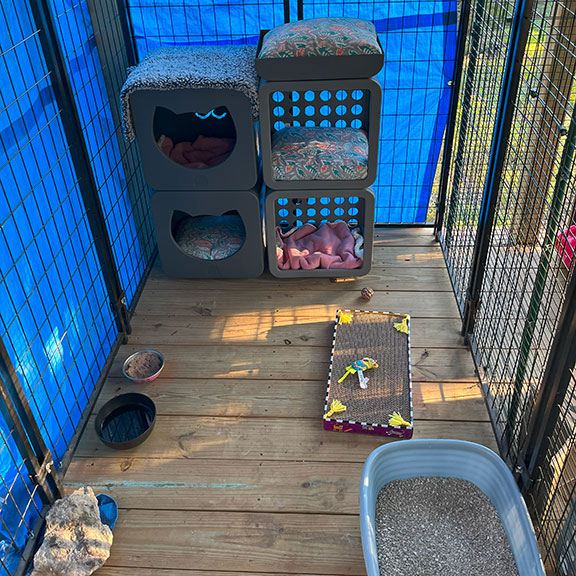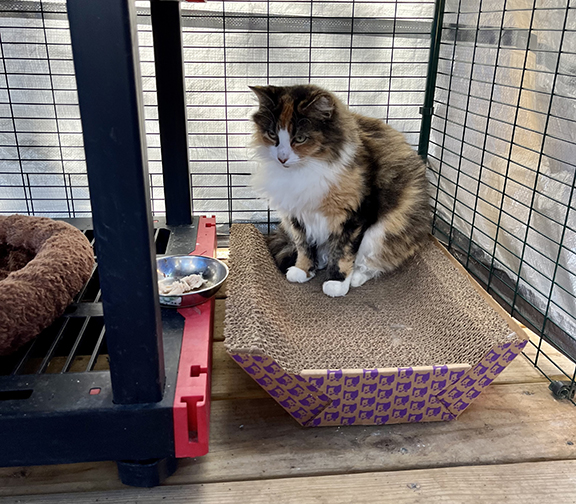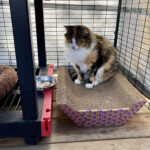Three Weeks For Cat Integration
Once the property was fenced securely, it was time to set up the cat enclosures at the Sanctuary.
Upon arrival, every cat spends at least three weeks in a relocation cage. These cages, varying in size depending on the cat’s age and temperament, allow them to adjust to their new surroundings.
This three-week period is crucial for the cat to establish its territory and recognize the Sanctuary as its new home. This adjustment period is essential for any cat, whether adopted or moving between homes. For feral cats, the timeframe may be extended beyond three weeks.

Temporary Relocation Cages
The relocation cages are elevated on wooden decks with metal roofs, providing shelter from the elements. Ensuring the cages are not directly on the ground enhances their effectiveness.
This setup, which offers adequate protection, is designed with the cats’ comfort and safety in mind. Future designs will include larger roof extensions to prevent rain and wind from entering the sheltered area, further ensuring the well-being of our feline residents.
For durable and reasonably priced relocation cages, I recommend the customizable options available from Omlet. These cages can be tailored to fit specific needs, with additional features like interior shelves and weatherproof panels. Alternatively, a dedicated kitten kennel is necessary to prevent escapes.
In addition to Omlet cages, I acquired a dog kennel for adult cats, which serves as an excellent relocation space for average-sized adult cats.
Preparing For A New Arrival
Prior to the arrival of a new cat, the relocation cages are thoroughly cleaned and prepared. Hard surfaces are sanitized using a reliable disinfectant, ensuring a hygienic environment.
Fresh bedding, blankets, and comforting toys are provided to help the new residents settle in. Diligent efforts in maintaining the cleanliness of these cages is crucial for the health and well-being of cats.

Open Cage
After the three-week isolation period, the door to the relocation cage is opened, allowing the cat to explore its surroundings at its own pace.
Food and water are left inside the cage for a few days to ease the transition. It’s common for cats to linger in their cage for an additional day or two before fully venturing out.
Eventually, they explore other areas of the property, signaling the end of their adjustment period. The cage is then cleaned and prepared for the next resident.









